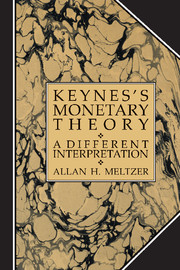Book contents
- Frontmatter
- Contents
- Preface
- 1 Introduction
- 2 Keynes in the 1920s: ideas, beliefs, and events
- 3 Theories, implications, and conjectures in the 1920s
- 4 The General Theory: a different perspective
- 5 Monetary reform and international economic order
- 6 Other interpretations of the General Theory
- 7 Conclusion
- References
- Index
2 - Keynes in the 1920s: ideas, beliefs, and events
Published online by Cambridge University Press: 05 September 2009
- Frontmatter
- Contents
- Preface
- 1 Introduction
- 2 Keynes in the 1920s: ideas, beliefs, and events
- 3 Theories, implications, and conjectures in the 1920s
- 4 The General Theory: a different perspective
- 5 Monetary reform and international economic order
- 6 Other interpretations of the General Theory
- 7 Conclusion
- References
- Index
Summary
Most of the ideas that we associated with Keynes – ideas that had a lasting influence on economics – developed during the 1920s. Early in the decade, Keynes was a quantity theorist of Cambridge persuasion who differed little from his teachers and colleagues. By the end of the decade, with the Treatise on Money nearly complete, most of the main ideas that we think of as Keynes's distinct contributions to monetary theory were either partly formed or well developed. He was no longer a quantity theorist and believed, firmly, that the quantity theory, though not useless, provided a poor foundation for monetary analysis. He had related stocks and flows in a framework that determined, simultaneously, the price level, interest rate, saving, and investment. He had laid the groundwork for his contributions to the theories of domestic monetary and fiscal policy and of international monetary policy. The latter contribution developed, when the opportunity came, into the Bretton Woods framework. He had introduced expectations, or as he often referred to it, bearishness – a subject to which he contributed in his Treatise on Probability – into the theory of the demand for money. He was well along toward the development of the general equilibrium framework that became the orthodox monetary theory for generations of students.
The development was not complete. Keynes had not taken his ideas as far as he later did, and he recognized that more had to be done.
- Type
- Chapter
- Information
- Keynes's Monetary TheoryA Different Interpretation, pp. 17 - 60Publisher: Cambridge University PressPrint publication year: 1989



